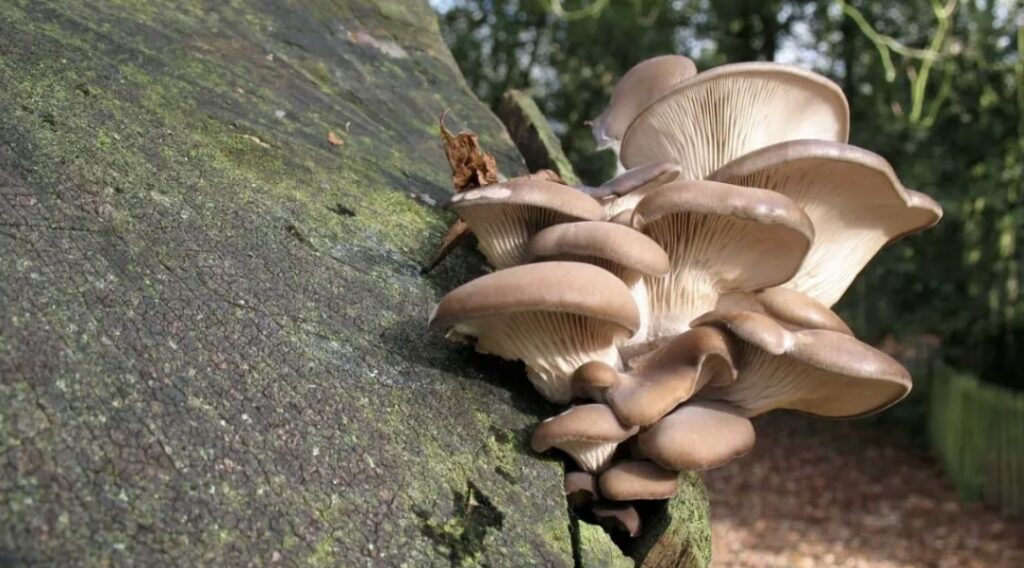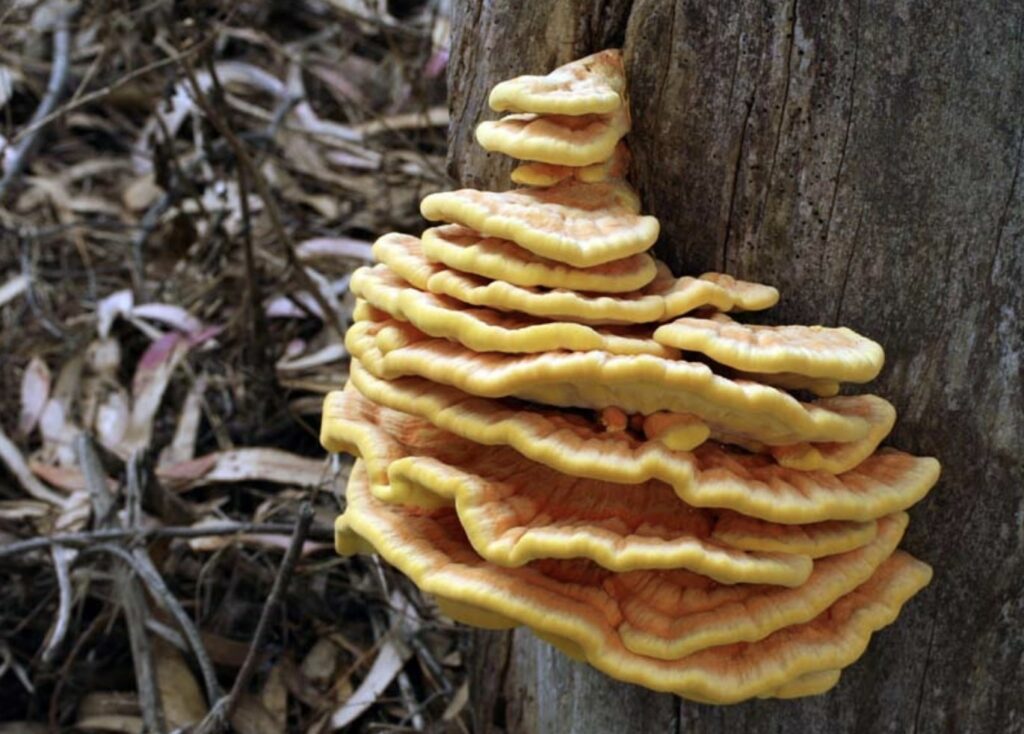Spotted a red mushroom in your garden and unsure about what to do with it?
Mushroom colors serve two purposes – for warning and attraction. Still, some red mushrooms are edible but most are poisonous, lethal, and even hallucinogenic.
Here, we’re giving you the 101 on 15 of the most common types of red mushrooms. Try to match the red mushroom you found in your garden to any one of these, and find out what you can do with it!
15 Types of Red Mushrooms
1. Scarlet Waxcap (Hygrocybe Coccinea)
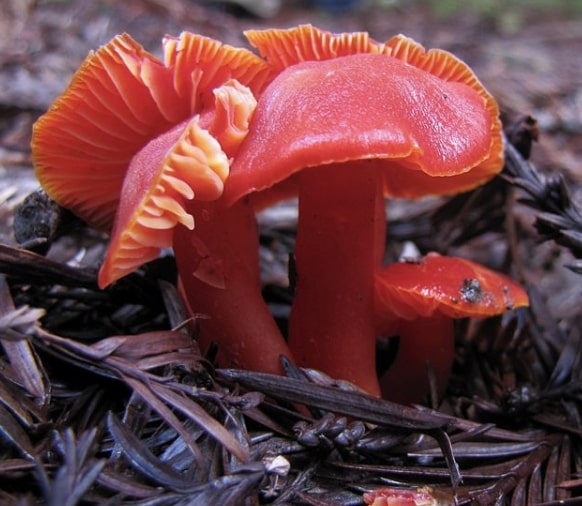
| Scientific Name | Hygrocybe coccinea |
| Common Name | Scarlet waxcap, Righteous red waxy cap, Scarlet hood |
| Family | Hygrophoraceae |
| Toxicity | Non-toxic |
| Edible | Yes |
The Scarlet Waxcap is a medium-sized, 6-centimeter mushroom.
This mushroom can be identified through its scarlet red waxy hat. Under its hat, there are gills connected to the stem usually in red or orange color.
It is native to North America, Europe, and Asia. It is usually found in grasslands and mixed forests during late summer, autumn, or early winter.
The Scarlet Waxcap is edible but must be cooked thoroughly before consumption.
2. Poison Fire Coral (Podostroma cornu-damae)
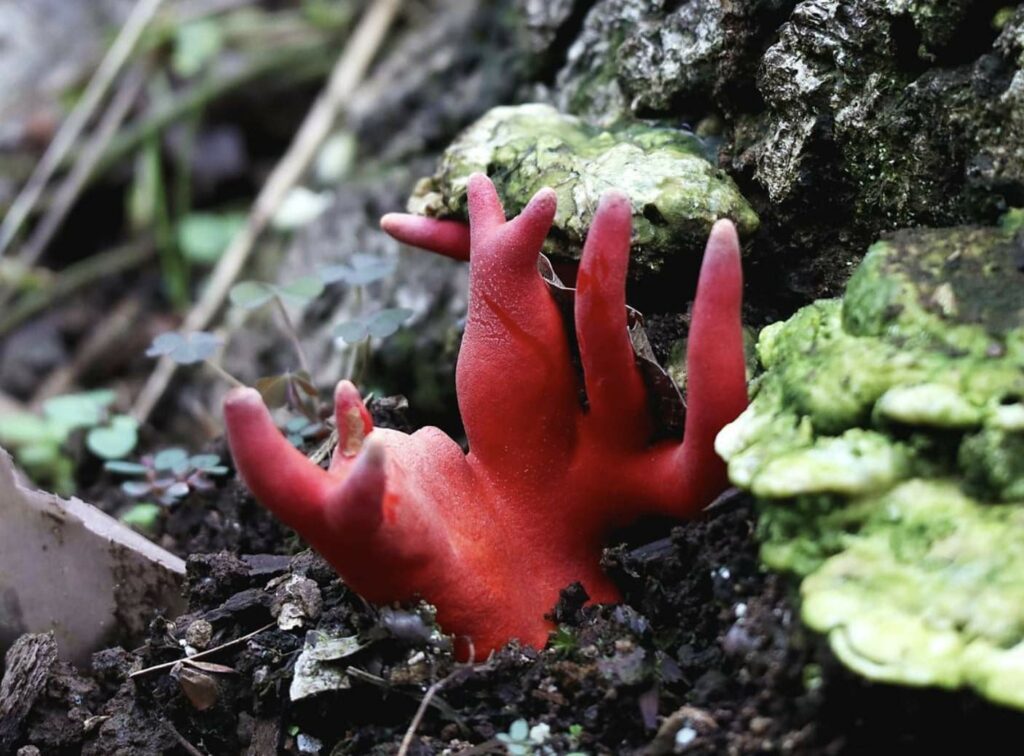
| Scientific Name | Podostroma cornu-damae |
| Common Name | Poison Fire Coral |
| Family | Hypocreaceae |
| Toxicity | Extremely toxic |
| Edible | No |
The Poison Fire Coral Mushroom is one of the deadliest mushrooms in the world.
The body of its fungus resembles a group of red horns or antler-like fruiting bodies emerging from the ground.
The fruit body of the Poison Fire Coral contains “trichothecene mycotoxins” which are highly potent and fatal when taken. This toxin can be transferred by mere touch or skin contact.
Some symptoms of Poison Fire Coral poisoning include fever, diarrhea, abdominal pain, and vomiting. There are also cases where persons experience hypotension, difficulties in speech and motion, and confusion, after contact with this toxic red mushroom.
Its species are native to Korea, China, and Japan. Recently, it has also been discovered to exist in Australia, Papua New Guinea, and Indonesia.
3. Cinnabar Red Chanterelle (Cantharellus Cinnabarinus)
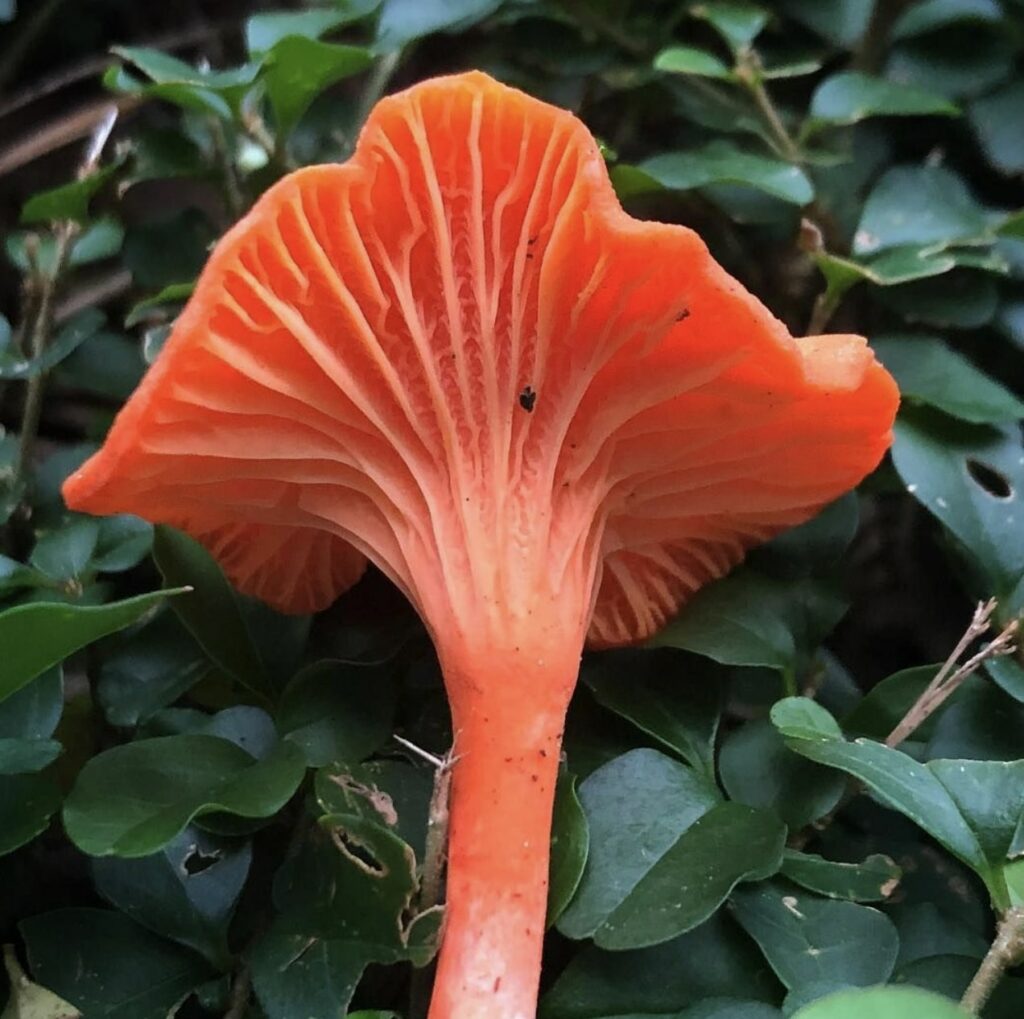
| Scientific Name | Cantharellus cinnabarinus |
| Common Name | Red Chanterelle, Cinnabar Red Chanterelle, Fire Chanterelle |
| Family | Cantharellaceae |
| Toxicity | Non-Toxic |
| Edible | Yes |
The Cinnabar Red Chanterelle is a tiny mushroom that usually has a cap of 5 centimeters in diameter.
It has a smooth funnel-shaped surface with curled edges and emits a fruity smell. Under the cap, it has false gills with a lighter shade than the top layer.
The Cinnabar Red Chanterelle is an edible red mushroom with a peppery taste. It is rich in iron, vitamin D, copper, and fiber.
The Cinnabar Red Chanterelle is native to the eastern region of North America. It usually grows on broadleaf and conifer forests during summer and fall. They grow only on the ground and around trees, not in open fields or wood.
4. Jackson’s Slender Amanita (Amanita Jacksonii)
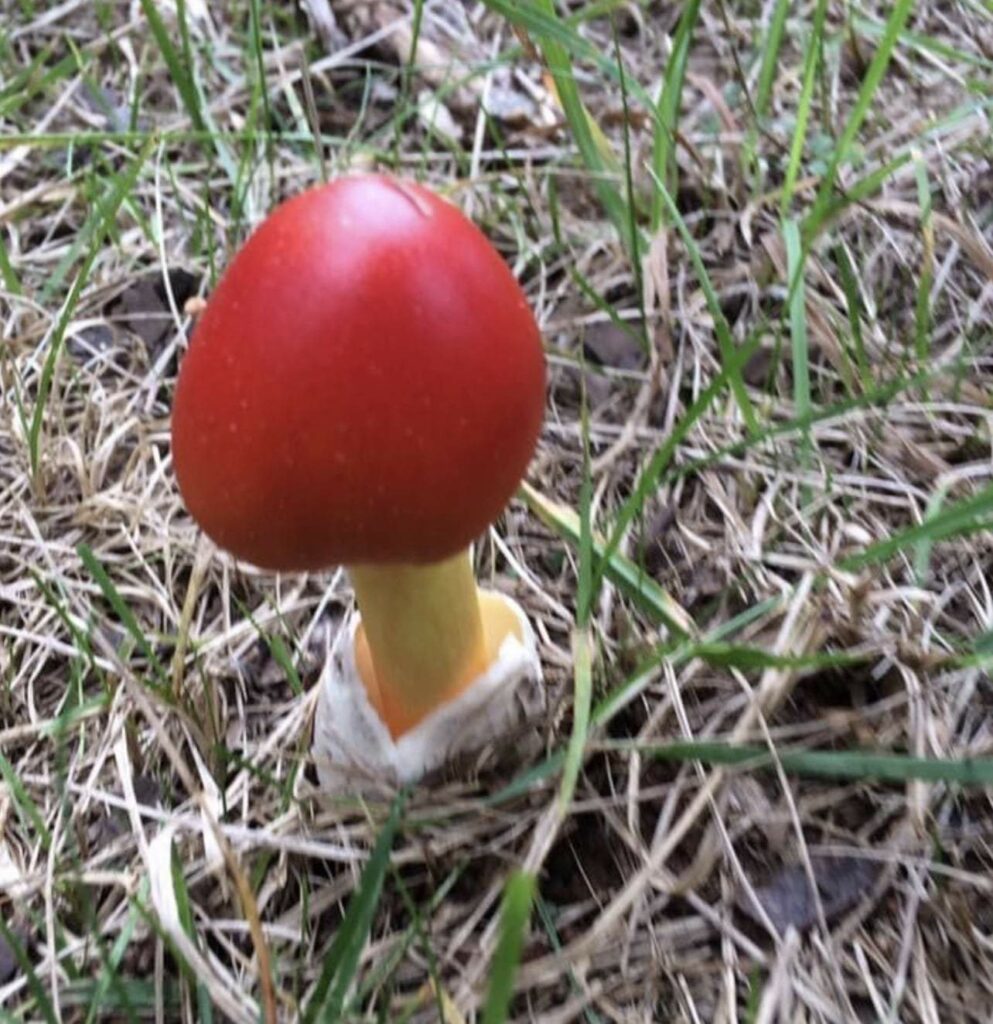
| Scientific Name | Amanita Jacksonii |
| Common Name | American Slender Caesar, Jackson’s Slender Amanita, Eastern Caesar’s Amanita |
| Family | Amanitaceae |
| Toxicity | Non-Toxic |
| Edible | Yes |
The Jackson’s Slender Amanita has a red-orange gradient for its mushroom cap. Upon maturity, its cap can grow up to 12 centimeters in diameter.
It is usually found in the woodlands, oak, and pine trees of Canada, the United States, and Mexico.
Although it is an edible red mushroom, one must take precautions in misidentifying Jackson’s Slender Amanita with the toxic family species of Amanita phalloides and Amanita muscaria.
5. Emetic Russula (Russula Emetica)
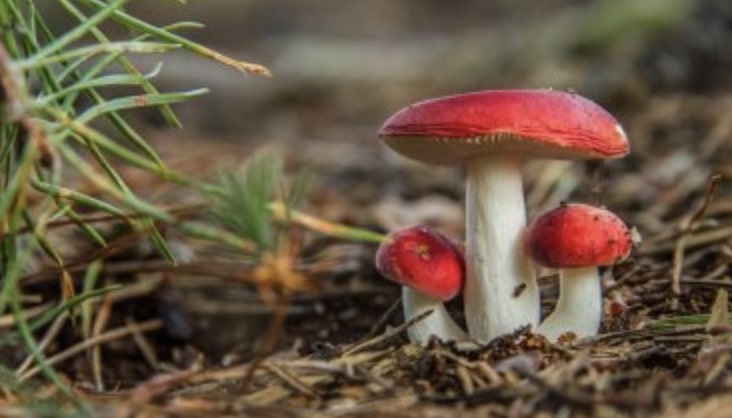
| Scientific Name | Russula emetica |
| Common Name | Vomiting Russula, The sickener, Emetic russula |
| Family | Russulaceae |
| Toxicity | Toxic |
| Edible | No |
Russula Emetica is a mushroom with a plain red top.
Its species are usually found in hardwood and coniferous forests throughout Europe, Asia, and North Africa. It grows in highly humid places and around trees.
Russula Emetica is toxic and causes vomiting, nausea, and diarrhea to whoever consumes it.
6. Fly Agaric (Red Amanita Muscaria)
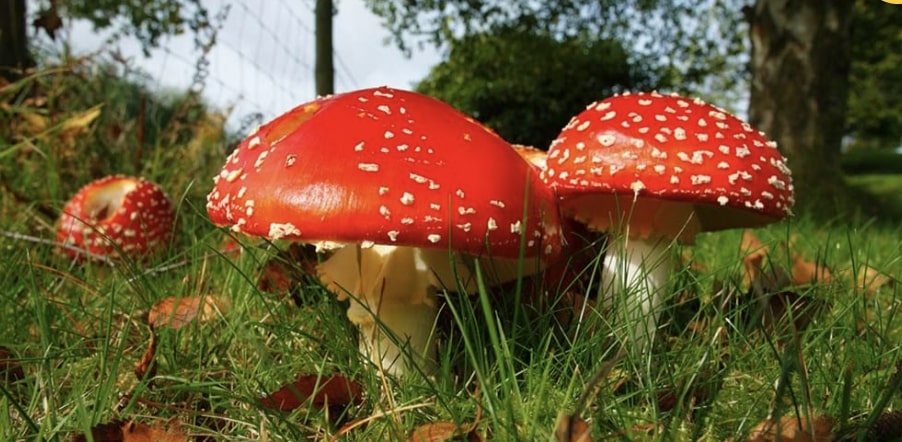
| Scientific Name | Amanita muscaria |
| Common Name | Fly amanita, Fly agaric |
| Family | Amanitaceae |
| Toxicity | Toxic |
| Edible | No |
Fly Agaric is known for its bright red cap and white spots. They inspired the design of the mushrooms in the game series Mario and Luigi.
Also called Fly amanita, farmers usually place this fungus in a bowl to attract and kill flies.
Fly Agaric is found in coniferous forests and birch trees. Its cap widens up to 20 centimeters in diameter upon maturity.
7. Ox Tongue (Fistulina Hepatica)
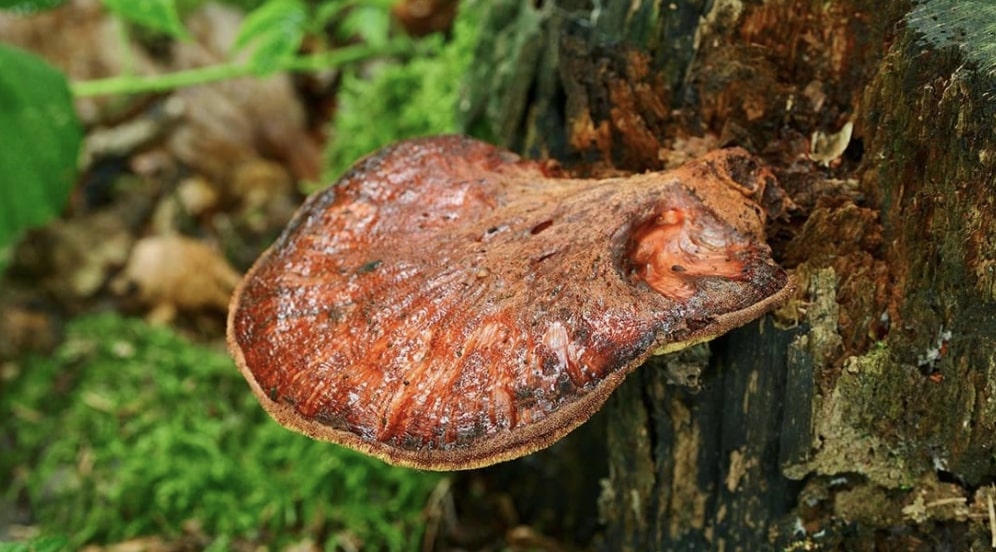
| Scientific Name | Fistulina Hepatica |
| Common Name | Ox Tongue, Tongue mushroom, Beefsteak, poor man’s steak |
| Family | Fistulinaceae |
| Toxicity | Non-Toxic |
| Edible | Yes |
Ox Tongue largely resembles a large tongue, with a meat-like texture and juice which seems like blood.
This mushroom is edible and used as a substitute for meat. It emits an acidic, bitter, and sour taste. However, it can only be eaten when it is still young.
Once the body of the fungus turns dark brown, it becomes inedible and can cause gastrointestinal problems.
Ox Tongue mushrooms are found in the forests of Europe, Australia, Africa, and North America. It grows on chestnut and oak trees, settling in small groups, in its trunks.
8. Stinkhorn Mushrooms (Phallaceae)
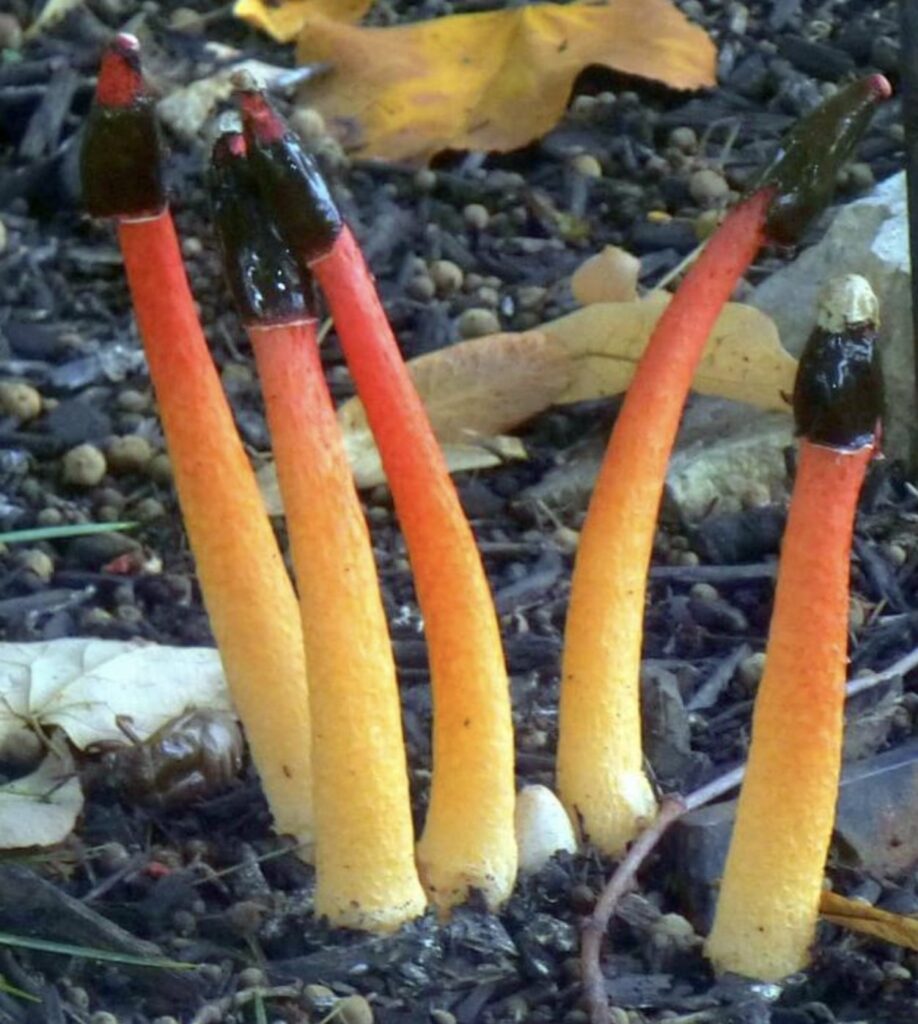
| Scientific Name | Phallaceae |
| Common Name | Stinkhorn mushrooms |
| Family | Phallaceae |
| Toxicity | Non-Toxic |
| Edible | Yes |
Stinkhorn mushrooms are known for their strange shape and unpleasant odor. Its smell is likened to that of feces or a corpse.
However, their foul odor serves to attract flies and bugs. Once these insects come in contact with stinkhorn mushrooms, it becomes another means to spread the spores of the fungi.
During its egg stage, the stinkhorn mushroom does not release an unpleasant smell and can still be eaten. However, they cease to be edible upon maturity.
There are various species of red stinkhorn mushrooms such as the Starfish fungus (Aseroe rubra), Octopus stinkhorn (Clathrus archeri), Basket stinkhorn (Clathrus ruber), Stinky squid (Pseudocolus fusiformis), and the dog stinkhorn (Mutinus elegans).
9. Frost’s Bolete (Butyriboletus frostii)
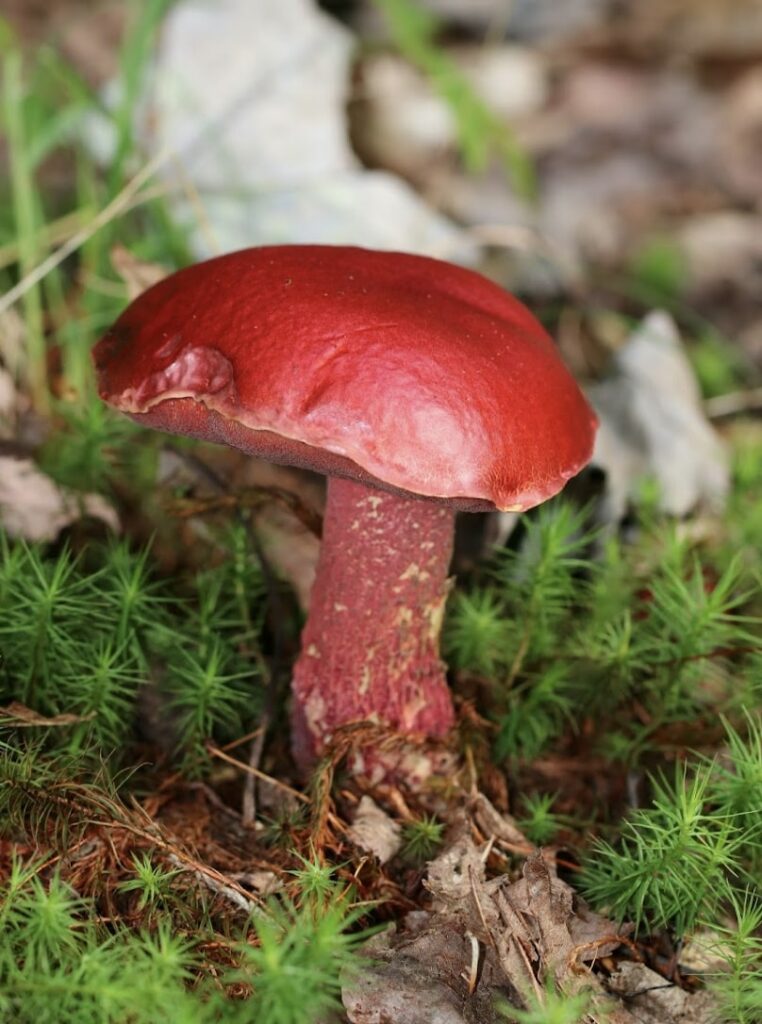
| Scientific Name | Butyriboletus frostii |
| Common Name | Apple bolete, Frost’s bolete, Candy-apple bolete |
| Family | Boletaceae |
| Toxicity | Non-Toxic |
| Edible | No |
Frost’s Bolete is found in America, Costa Rica, and Mexico.
They usually have a symbiotic relationship with hardwood trees such as oaks. They grow in small groups at the bottom of these hardwood trees.
This species of mushroom does not have gills but has tubes and pores instead.
Although they are non-toxic, there is still a limited number of studies conducted to prove their safety for consumption.
10. Scarlet Elf Cup (Sarcoscypha coccinea)
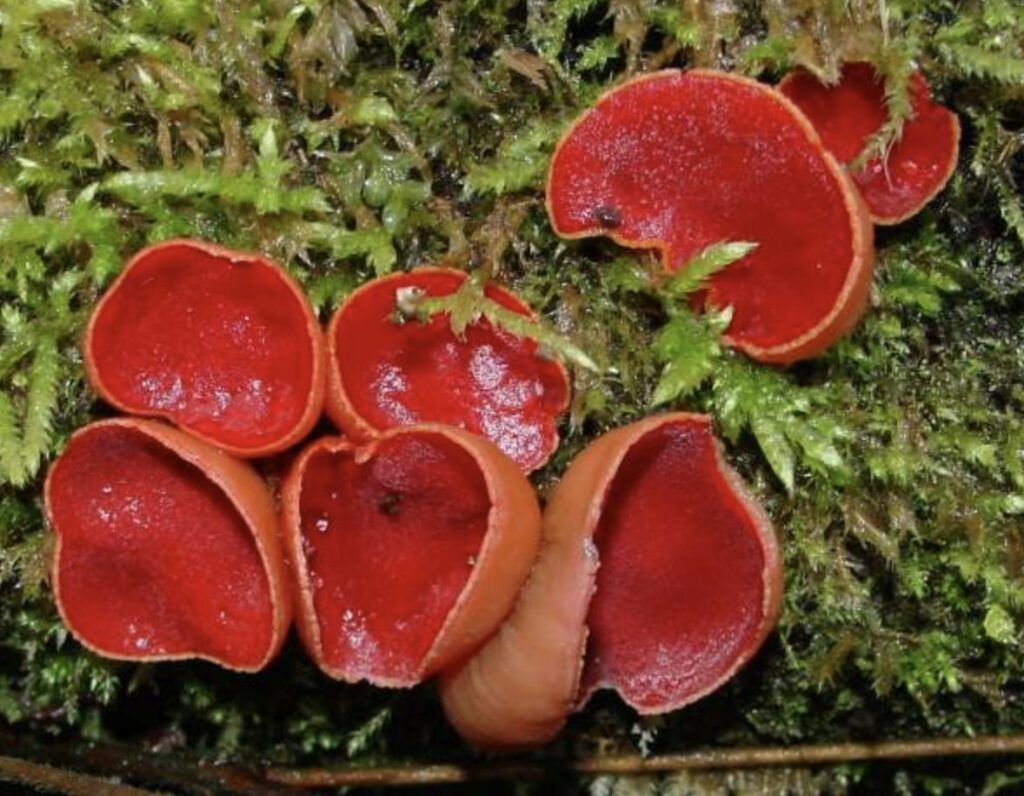
| Scientific Name | Sarcoscypha coccinea |
| Common Name | Scarlet cup, Scarlet elf cap |
| Family | Sarcoscyphaceae |
| Toxicity | Non-Toxic |
| Edible | Yes |
The Scarlet Elf Mushroom turns into a cup with red color on the inside and red-orange on its outer layer. It grows in large groups and up to 6 centimeters in diameter.
This species of mushroom is usually found growing around decaying branches of damp forest floors, dead hardwood trees, or under the fallen leaves in the soil.
11. Basket Stinkhorn Mushroom (Clathrus ruber)
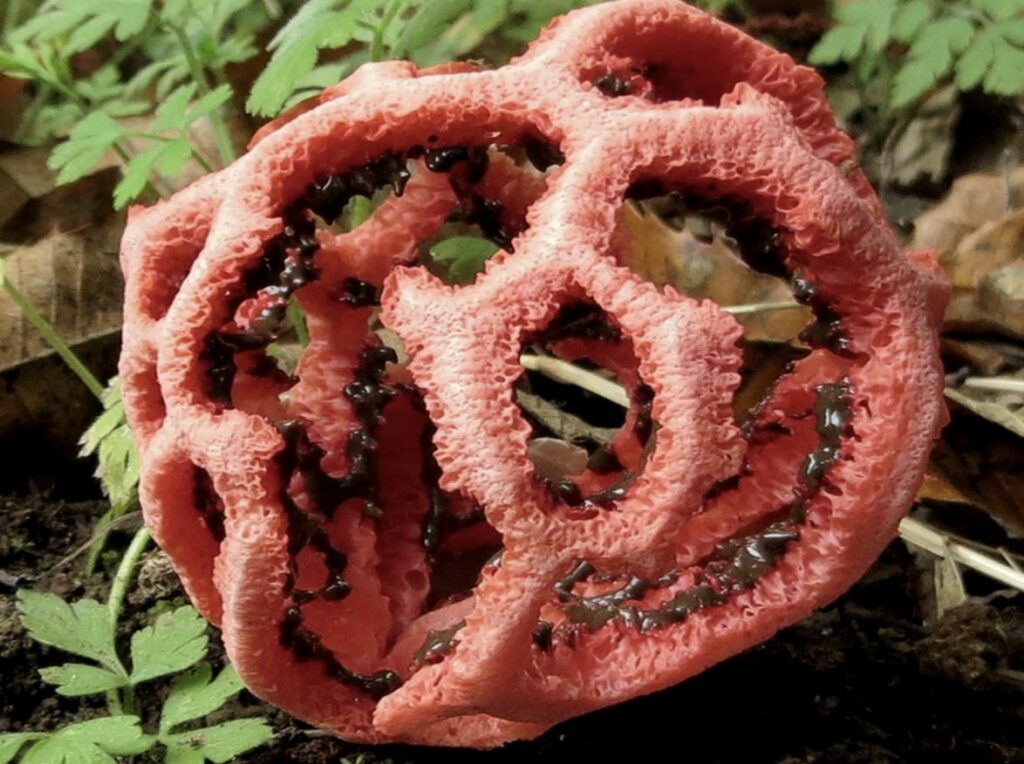
| Scientific Name | Clathrus ruber |
| Common Name | Basket Stinkhorn mushroom |
| Family | Phallaceae |
| Toxicity | Toxic |
| Edible | No |
Basket stinkhorn mushrooms are usually found in laws and backyards near wooden debris.
This mushroom begins to appear as a white egg but it will later on open into a red or pink fungus. It is shaped like a round ball with large holes and spongy arms.
Basket stinkhorns can grow up to 6 centimeters in diameter.
12. Starfish Fungus (Aseroe rubra)
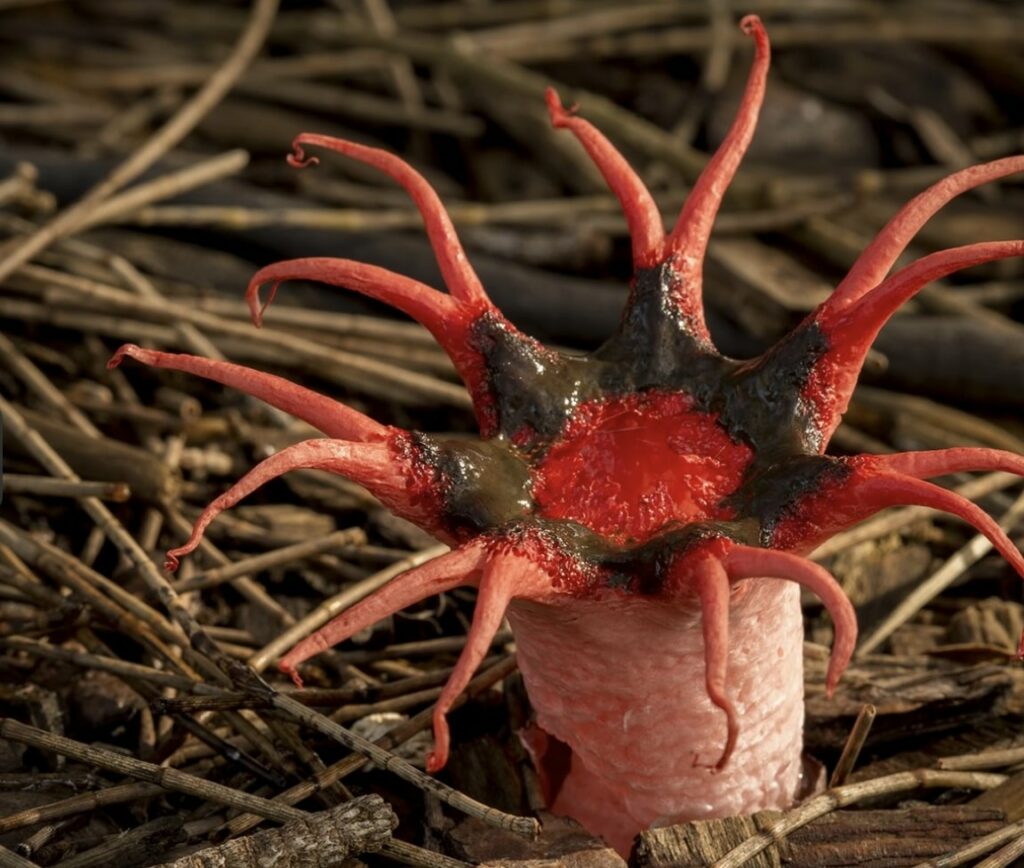
| Scientific Name | Aseroe rubra |
| Common Name | Starfish fungus, Anemone stinkhorn |
| Family | Phallaceae |
| Toxicity | Toxic |
| Edible | No |
This red mushroom is shaped like a sea anemone or starfish.
Similar to other stinkhorn mushrooms, starfish fungus first appears to look like a white egg. Later, its pink and spongy tentacles appear and the top develops into a red center.
Starfish mushrooms grow up to 10 centimeters tall and 4 centimeters wide. They are known for giving off a foul aroma.
13. Octopus Stinkhorn Mushroom (Clathrus archeri)
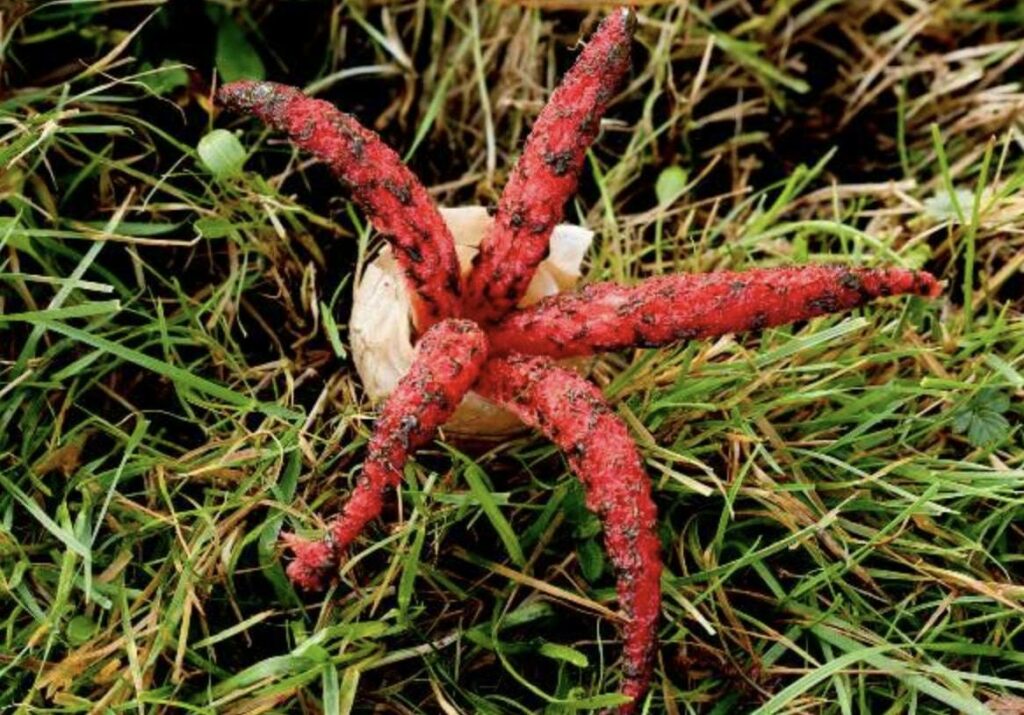
| Scientific Name | Clathrus archeri |
| Common Name | Octopus Stinkhorn Mushroom, Devil’s Fingers |
| Family | Phallaceae |
| Toxicity | Unknown |
| Edible | No |
Octopus Stinkhorn mushrooms are also common in lawns and backyards.
Developing from a white egg, they grow red tentacle-like arms and become covered in foul-smelling goo.
This mushroom can reach up to 10 centimeters tall and can have 4 to 6 spongy arms.
14. Stinky Squid Mushroom (Pseudocolus fusiformis)
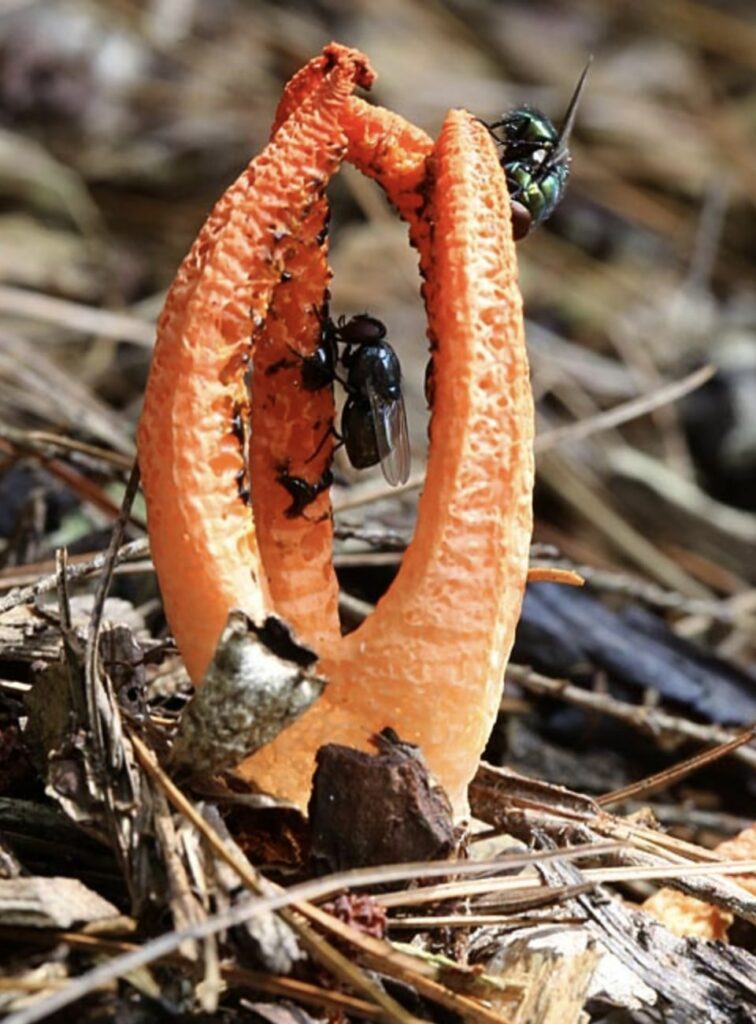
| Scientific Name | Pseudocolus fusiformis |
| Common Name | Stinky Squid Mushroom |
| Family | Phallaceae |
| Toxicity | Toxic |
| Edible | No |
The stinky squid is another variation in the stinkhorn mushroom family. It is usually found in woodlands, gardens, and lawns.
It has 3 to 4 red-orange gradient arms with a pear-shaped base. The arms of the stinky squid mushroom are joined at the top.
The stinky squid mushroom also emits a pig manure-like scent. It grows up to 6 centimeters tall.
15. Two-Colored Bolete Mushroom (Boletus bicolor)
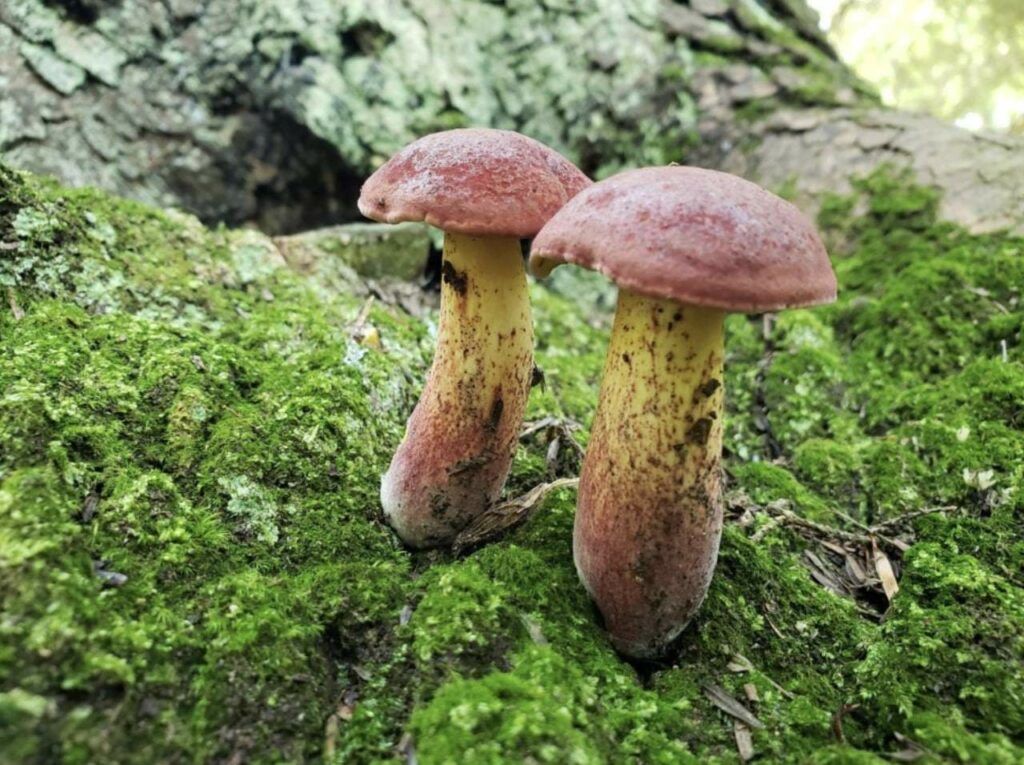
| Scientific Name | Boletus bicolor |
| Common Name | Two-Colored Bolete Mushroom, Baorangia bicolor |
| Family | Boletus |
| Toxicity | Non-Toxic |
| Edible | Yes |
This Bolete mushroom has a brick red top and stem. It also has a yellow underside with no gills.
Once it is cut open, it reveals a yellow-colored flesh that smells like curry. The two-colored Bolete mushroom grows up to 15 centimeters tall and its red cap spans up to 16 centimeters wide.
The two-colored Bolete mushroom is edible and can be consumed fresh or dry.
FAQs on Red Mushrooms
Why do I have red mushrooms?
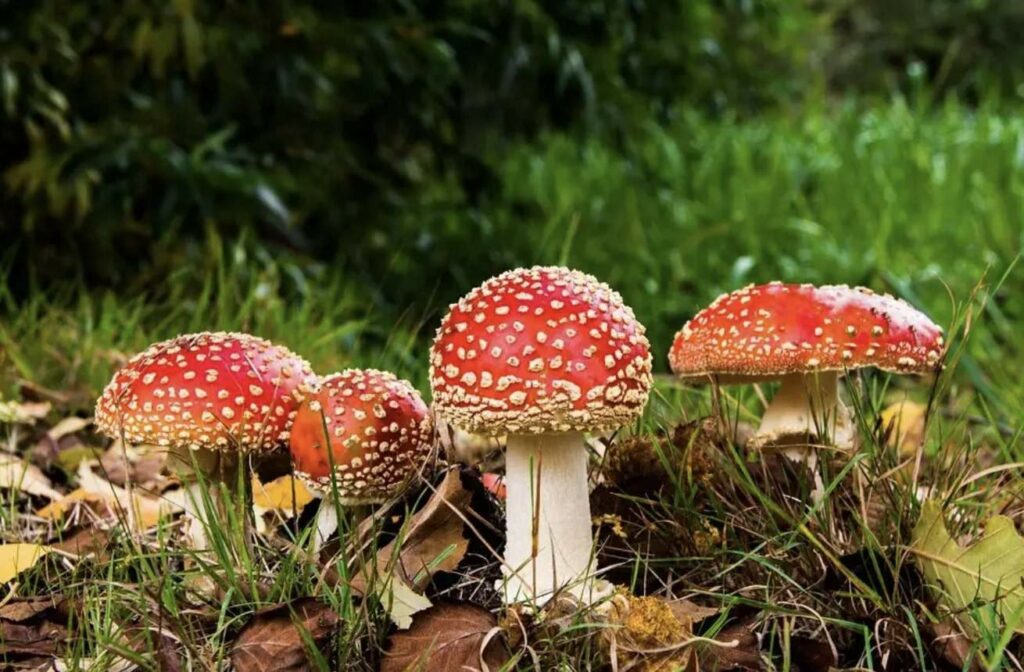
Red mushrooms emerge on lawns or backyards because of their soil rich in organic matter and damp, humid, and shaded conditions – all of which facilitate mushroom growth.
Once the soil has enough food for the underground fungi, and the weather condition becomes humid, the environment is set for the mushroom to grow above ground.
Mushrooms usually go away due to hot weather. However, if the body or fungal mycelia stays underground with plenty of organic matter to feed on, the mushrooms will most likely keep on reproducing once the specific conditions mentioned above happen again.
On the brighter side, the growth of mushrooms in one’s backyard is a sign of healthy soil.
By its nature, fungi feed on decomposed plants. They break these down and convert them into humus, which in effect fertilizes the soil.
Are there edible red mushrooms?
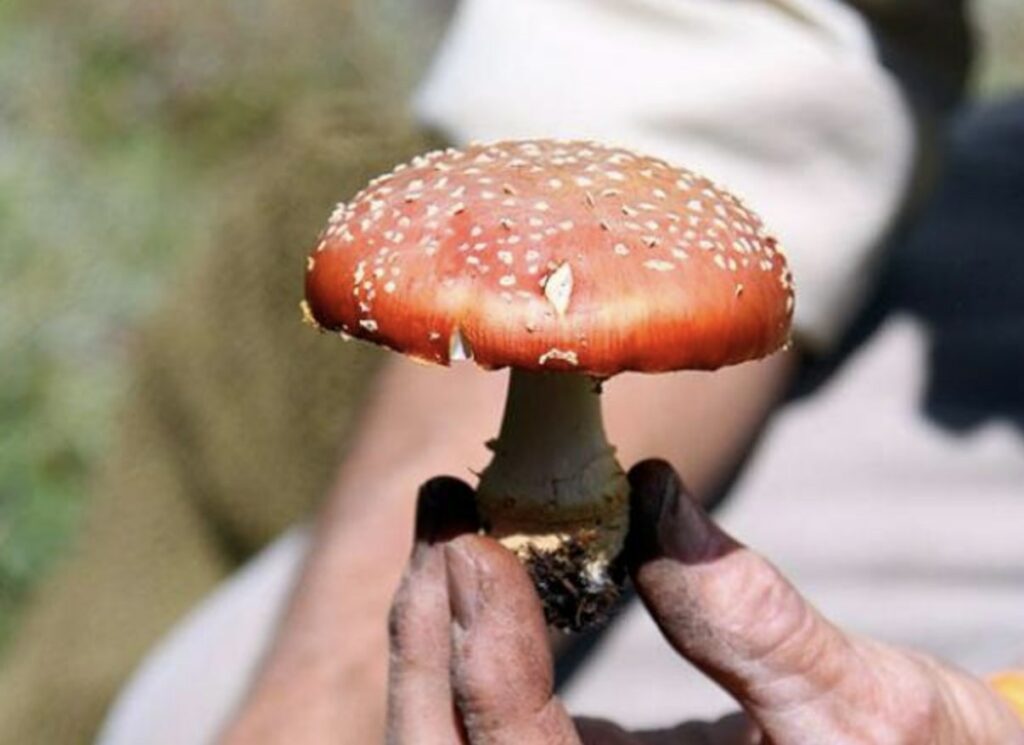
There are edible red mushrooms. They include the Ox Tongue mushroom, the Red waxcap, the Red Bolete, and the Red Chanterelles.
For instance, the Wuyi Mountains of China are known for their rare wild red mushrooms. Its dried version is used in soups and teas that help women with menstrual flow or childbirth.
Fun fact: Many types of edible mushrooms have common traits such as brown gills, smooth, scaleless caps, and stems without a ring.
How to identify a poisonous red mushroom
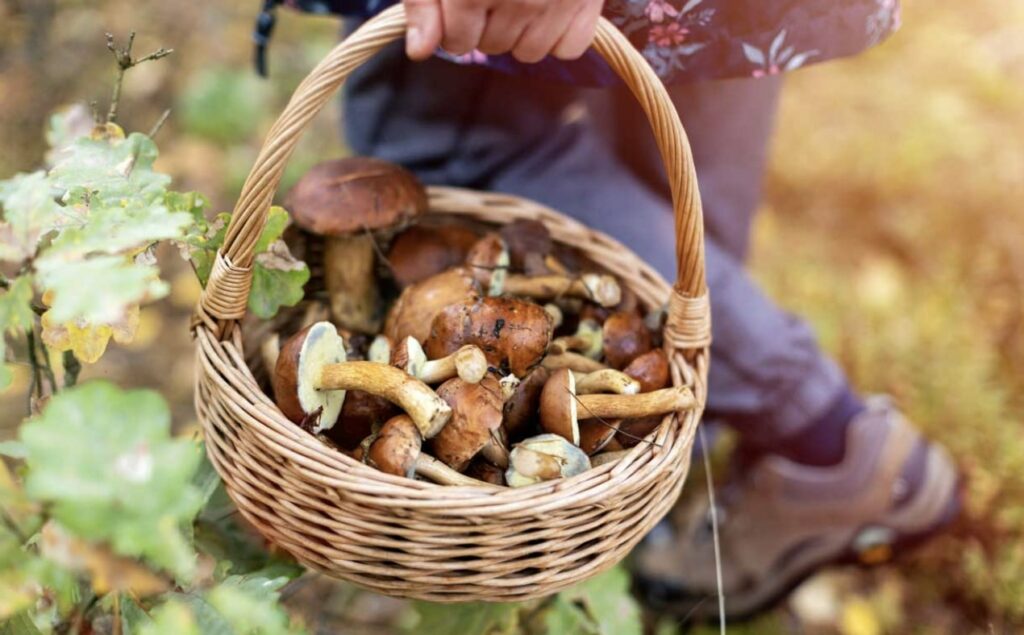
Here’s how to identify a poisonous red mushroom:
- Look at the volva. This is the bulbous growth at the bottom of the stem and under the soil. If there exists a volva and it is colored, it is a sign that the mushroom is most likely poisonous.
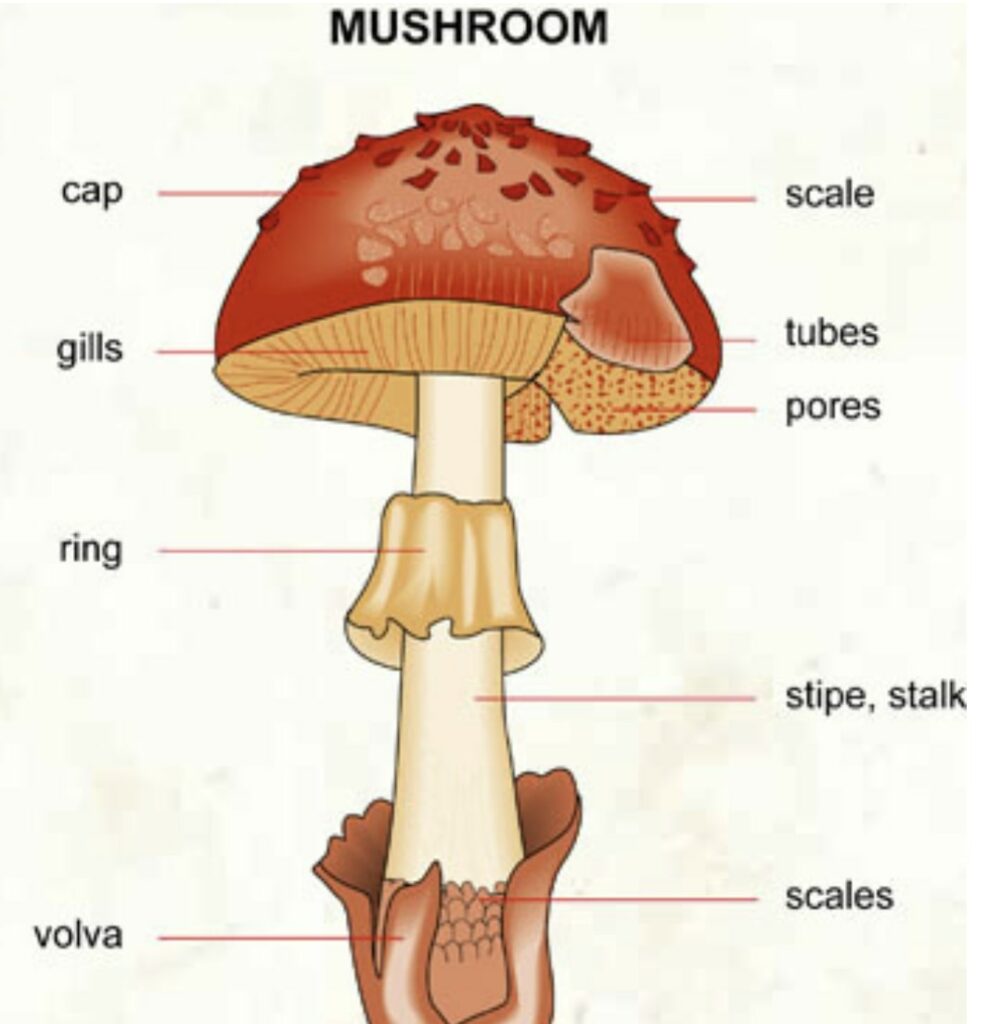
- Do not eat mushrooms you cannot name. Although not all red mushrooms are poisonous, still follow the general rule. For instance, there are deadly mushrooms like the Destroying Angel that resemble edible mushrooms.
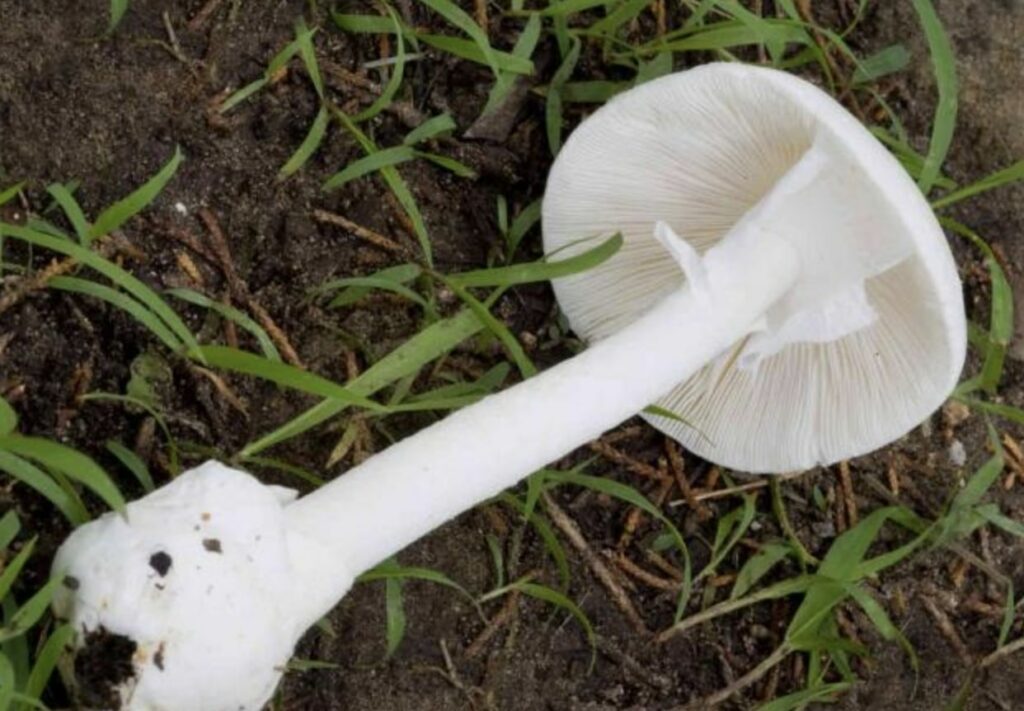
- Check the gills. White gills are a sign of the mushroom’s toxicity. Check the gills by flipping the cap. Underneath are long ribs or holes. If these are white, then the mushroom is most likely toxic.
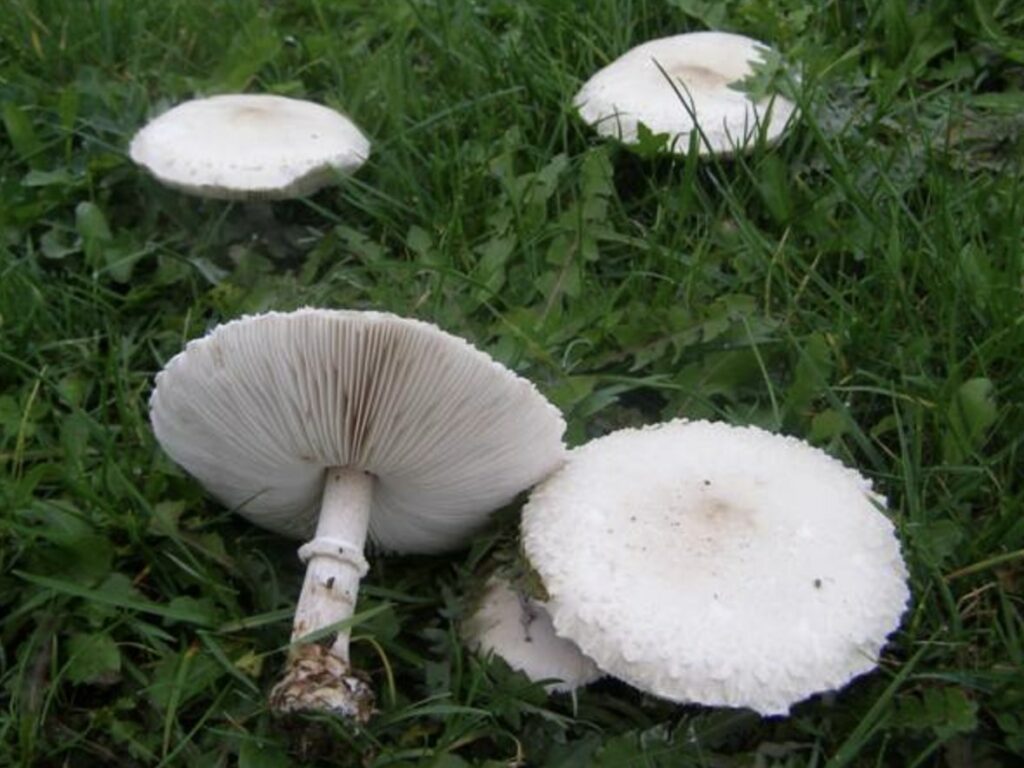
- Stop and smell the mushroom. If the mushroom odor is fishy, chemical, or acidic, then it is most likely a toxic variety. Keep in mind that most edible mushrooms usually have an earthy aroma.
What happens when you touch a red mushroom?
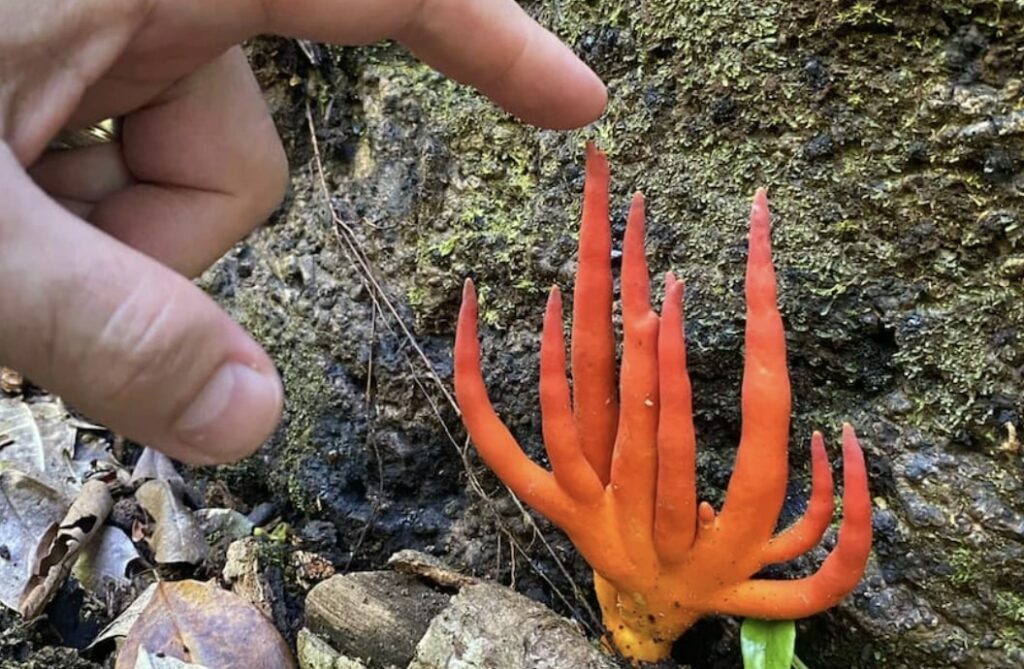
You’ll be glad to know that nothing will most likely happen after touching a red mushroom.
Generally, touching a red mushroom is harmless. It needs to be consumed to introduce the poisonous effects to your body.
The exception is the Poison Fire Coral Mushroom, the world’s second-deadliest fungus. It is the only known poisonous mushroom that can transfer its potent toxins through skin contact.
Studies showed that its toxins can cause an immediate burning sensation and red rashes after only 5 to 30 minutes of skin contact.



